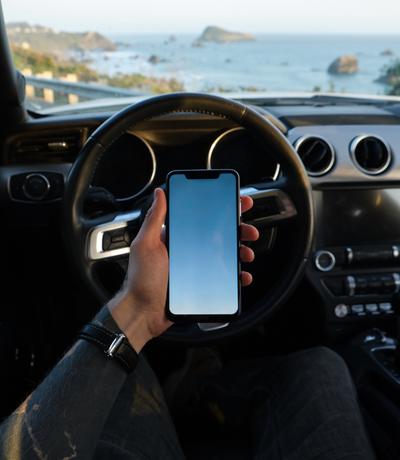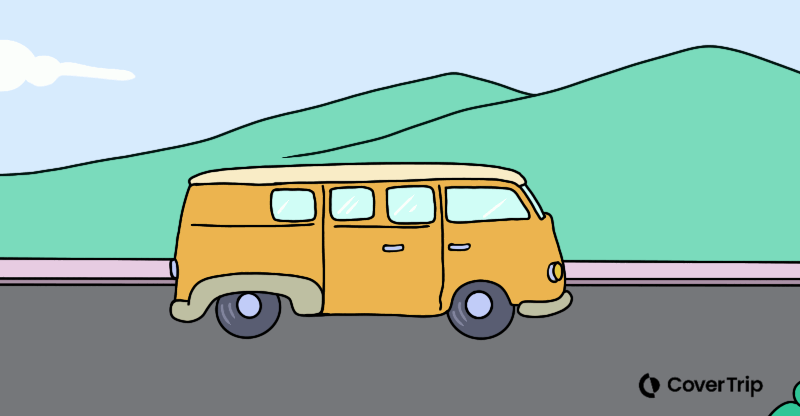How to road trip safely in hurricane season
30 September 2022
The big US travel news this week is all about Hurricane Ian. Please stay safe everyone in Florida, South Carolina, and the surrounding areas!
If you’re traveling this last week of September, you could be escaping the hurricane or just road tripping to see the fall colors. With some gorgeous weather remaining and the recent drop in gas prices, it’s a good time to cruise the open roads and see all the things.
Meteorologists have predicted a very active Atlantic hurricane season—and it’s not over until November 30. So, while hurricane season 2022 continues, what are the latest guidelines for staying safe on a road trip?

Get the right tech
Hurricane Ian is not the only major storm that could happen this year. Before you start driving, make sure you have the right weather tech on your side.
The hurricane app that Floridians swear by is called Max Hurricane Tracker and it delivers the latest, most relevant, and accurate information on storms—and it’s free on both Android and iOS.
You can also follow these accounts on Twitter:
While we’re talking apps, download the gas rewards apps too. All of the major companies offer them and it’s simple to sign up to save money on gas.
Have the right chargers
One thing you do not want to run out of is a charge for your phone or phones. You can charge up using a port in your car, and you may even have a splitter to charge more than one device, but you’ll be glad if you have at least one wireless charger that can charge lots of devices just in case.
Just in case of what?
Just in case your car is not working or you’re stuck somewhere without USB ports. A handy power bank with multiple USB ports fits into your backpack for on-the-go charging on all your trips. This one by Anker comes well recommended by several travel writers. If you need your phone’s flashlight, you could be very glad the phone is all charged up.
Upgrade your data plan
If you don’t have unlimited data, now is the time to spring for it. Your phone can act as a mobile hotspot if you have a signal, and the connected devices will work fine even if you don’t have Wi-Fi at that slightly shady motel.
Rearrange your glove compartment
Not kidding here. If you’re like most people, the glove compartment of your personal vehicle looks a lot like the kitchen junk drawer — it’s a catchall for everything. If you’re renting a vehicle for the road trip, it’s probably mostly empty.
Now’s the time to make sure you have the right things in your glove compartment, including copies of the following:
- Your driver’s license (yes, if your wallet gets stolen and you get pulled over in another state, you’ll want this)
- Your vehicle’s registration
- Your insurance cards – medical and vehicle
- Basic medical details like blood type, allergies, and chronic conditions
In case you’re unconscious, these docs can provide emergency responders the info they need. A chargeable high-powered flashlight is a good thing to have in your glove compartment too.
Check your vehicle insurance policy
Don’t laugh, loads of people never look at it after they buy it and you’re going to want to know what’s covered for the place you’re going. If you are renting a car for the road trip, you’ll want to review what coverage you have with your personal vehicle policy too.
Hint: check the policy for roadside assistance so you know who you can call if you have a dead battery or get locked out.
If you’re traveling across the border to Mexico or Canada, you’ll want to be sure your coverage goes with you. If not, you’ll need to buy a temporary plan.
See Does Travel Insurance Cover Rental Cars for more info.
Pack a roadside emergency kit
We’ll assume that you’ve had your vehicle prepped for your road trip and made sure you have (and know how to use), jumper cables, jack and spare tire.
All road travelers need a basic roadside emergency kit with flares or reflective triangles to help other drivers see your disabled car. You can pack a basic mechanical toolkit with screwdrivers, pliers, wire cutters, duct tape, etc. If you don’t know how to use them, perhaps a kind Samaritan will.
It’s also recommended to have blankets, gloves, boots, and warm caps if you’re traveling in a colder climate (or through a bad storm). Some food and water bottles are also a good idea.
See this article on building your own emergency roadside kit.
… and a first aid kit
Anytime you travel, you should have one of these. It’s helpful to have one in your car at all times. Here’s our best information on what should go in your travel medical kit.
What to expect post-storm
After a hurricane blows through an area, you’ll want to be cautious driving in the area. Be wary of flooded roads, downed power lines, and fallen debris on the road. Signs of a heavy storm can be present for days or even weeks — buildings may be boarded up, hotels may be full of evacuees, and basic services (think gas and groceries) can be limited.
Related topics
Damian Tysdal is the founder of CoverTrip, and is a licensed agent for travel insurance (MA 1883287). He believes travel insurance should be easier to understand, and started the first travel insurance blog in 2006.
